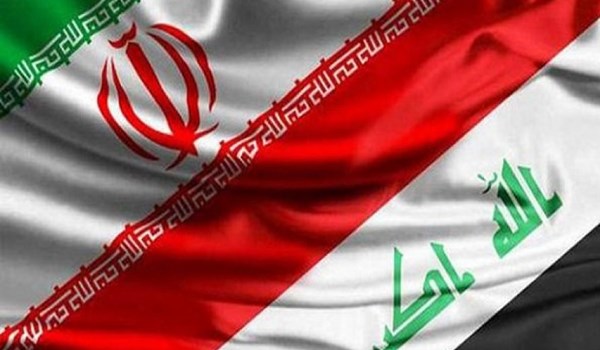
Iran Ups Non-Oil Exports to Iraq by 55 Percent


Iran exported $6.4 billion of commodities to Iraq during the first eight months of the current Iranian year, showing a 55 percent growth," Director of Arab-African Affairs of Trade Promotion Organization of Iran (TPO) Farzad Piltan said on Tuesday, addressing a ceremony held for exemplary Iranian exporters of Arvand Free Zone in Khorramshahr City, Khouzestan province, in Southwestern Iran.
He underlined that a 1,000-square-meter area has been allocated to establish a permanent exhibition for 25 Iranian companies showcasing their products in the Iraqi capital of Baghdad.
Piltan described building new transit routes between Iran and its neighboring countries as one of the other projects to expand trade with them, and said that connecting the railway system of Iran as well as building a transit corridor between Iran and Kuwait is being currently followed up.
The Arvand Free Zone with an area of 37,400 hectares is at the confluence of the Karoun and Shatt al-Arab Rivers and in proximity to Iraq and in the Northwest of Persian Gulf.
This Zone has long been one of the border and oil rich zones of the country due to the existence of freshwater Rivers of Karun and Arvand and also transportation facilities, including road, rail, sea and air.
In relevant remarks in mid-December, Iranian Ambassador to Iraq Iraj Masjedi underlined that the two neighboring countries can easily double their trade exchanges in the near future.
"Iran’s non-oil trade with Iraq stands at around $10 billion; the amount can reach $20 billion through revenues of oil and gas trades between the two states," Masjedi said, addressing a conference on boosting Iran-Iraq economic ties in Basra attended by 120 businessman and entrepreneurs, as well as 34 Iranian companies.
The Iranian ambassador reiterated the need for involvement of Iranian companies in the Iraqi projects to help improve economic transactions between the two countries.
Some 64 Iraqi businesspersons attended Iran EXPO, Export Potential Exhibition of the Islamic Republic of Iran, last week, presenting their latest products in 12 classes of food industry, agriculture, automotive, handicrafts, industrial parts, electricity and energy, carpets, textiles, leather and apparel, household appliances, cellulosic health products, medical and hospital equipment, and construction industries.


Trump weighs using $2 billion in CHIPS Act funding for critical minerals

Codelco cuts 2025 copper forecast after El Teniente mine collapse

Electra converts debt, launches $30M raise to jumpstart stalled cobalt refinery

Barrick’s Reko Diq in line for $410M ADB backing

Abcourt readies Sleeping Giant mill to pour first gold since 2014

Nevada army depot to serve as base for first US strategic minerals stockpile

SQM boosts lithium supply plans as prices flick higher

Viridis unveils 200Mt initial reserve for Brazil rare earth project

Tailings could meet much of US critical mineral demand – study

Kyrgyzstan kicks off underground gold mining at Kumtor

Kyrgyzstan kicks off underground gold mining at Kumtor

KoBold Metals granted lithium exploration rights in Congo

Freeport Indonesia to wrap up Gresik plant repairs by early September

Energy Fuels soars on Vulcan Elements partnership

Northern Dynasty sticks to proposal in battle to lift Pebble mine veto

Giustra-backed mining firm teams up with informal miners in Colombia

Critical Metals signs agreement to supply rare earth to US government-funded facility

China extends rare earth controls to imported material

Galan Lithium proceeds with $13M financing for Argentina project

Kyrgyzstan kicks off underground gold mining at Kumtor

Freeport Indonesia to wrap up Gresik plant repairs by early September

Energy Fuels soars on Vulcan Elements partnership

Northern Dynasty sticks to proposal in battle to lift Pebble mine veto

Giustra-backed mining firm teams up with informal miners in Colombia

Critical Metals signs agreement to supply rare earth to US government-funded facility

China extends rare earth controls to imported material

Galan Lithium proceeds with $13M financing for Argentina project

Silver price touches $39 as market weighs rate cut outlook

















